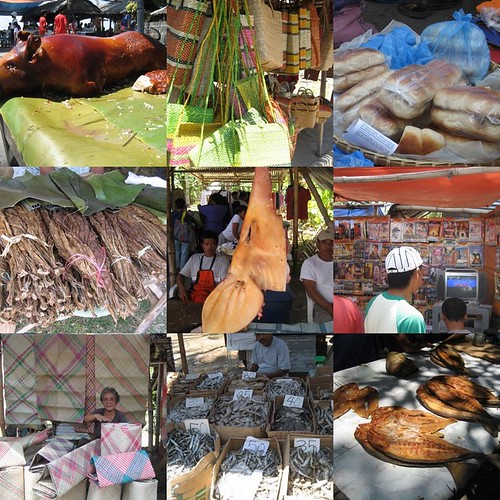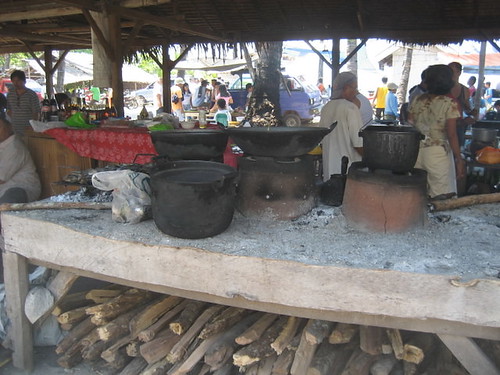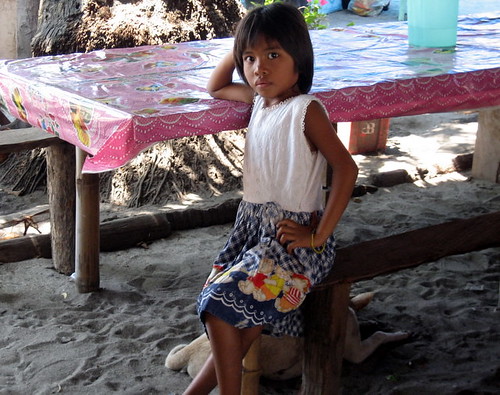It had been three years, but it may as well have been twenty. The airport was exactly the same. I walked on the blazing hot tarmac alongside the cart which held our luggage. There are no carousels here, just strong armed porters who take your claim tags and join the pack to rummage through the rising pile of bags on the floor.
At this point, as is always the case, the constant process of bumping into familiar faces in this small town begins. I counted three. It wasn’t officially Holy Week yet, after all. The throngs of people were not expected until the next day. My cousin was already outside, ready to whisk us off to our first order of the day, the Malatapay wednesday market. This was my special request and the reason I groggily stumbled out of bed at the ungodly hour of 5 am to catch the first flight.
I don’t remember precisely when I was at Malatapay last since it was so long ago, but I remember it well. Experiences like that are not so easily forgotten. Often when you revisit a place from your childhood, you are startled by how much smaller it seems to have become. Not this time.
Malatapay is located about 20 minutes south of Dumaguete in the town of Zamboanguita. On a regular day it is a relatively quiet patch of coconut trees and huts and a beach that serves as the jump off point for Apo Island. It is in the middle of the week when it springs to life, and like a sleeping giant whose slumber is disturbed, it awakens with a roar and rages on all day.
We finally get to the makeshift parking area where we parked under the shade of coconut trees and next to a man napping on the roof of his jeep which had a sullen looking cow tied to it’s rear. I walked over to a colorful display of native bags, hats and slippers and notice that here the crowd has thinned slightly. My ears pick up loud noises. I follow the noise with my eyes beyond the hanging abaca bags to a coconut grove where, apparently, the livestock auction is taking place. I see a large group of ranchers who appear to be shouting at once, standing amidst cows, pigs, goats and, is that a horse I see?
We retrace our steps back down the path we came from this time on foot, eyeing the items proudly displayed for sale (or barter). People from neighboring towns, from villages up in the mountains and even from nearby islands bring their products here so there is a wide variety of items. Aside from the usual fare of fresh fish and meats, you there are also grains and feeds, dried fish, dried tobacco leaves, knives, ropes, mats, live chickens, produce, kitchenware, native handicrafts, farming implements, fishing implements, bread, shoes, and clothes. Somehow I was surprised, and yet not really, to see pirated DVD’s for sale, complete with a 14 inch TV for testing.
The further down we went and nearer to the highway, the tighter it got and we found ourselves tiptoeing over stuff laid out on mats just to save our hiney from being run down by a truck or headbutted by a furious goat. Along the way, we shop for our lunch then head back towards the water to the shaded “dining area” where my cousin’s husband (incidentally, my source for the kinilaw recipe) has reserved us a table. He brings out his “sushi kit” and ceremoniously unzips it revealing the contents. From within he pulls out metal chopsticks which he distributes, cute little fish-shaped dishes, a bottle of pickled ginger, soy sauce, some calamansi (native citrus) and a tube of wasabi. This is so like him! He has the man there slice up some tuna for sashimi and instructs him on how to clean it.
 fresh tuna sashimi
fresh tuna sashimiI see a lechon (roast pig) with skin that glistened in the sun, I could almost hear the skin crackling. I couldn't resist so I go buy some for our group of ten. We hand over our clams and fish to the manang for cooking and order some liempo (more pork!). These are brought over with mounds of rice and some beers. I sink my toes into the sand and my teeth into one of the most delightful meals I’ve had in a long time. Ahhhh...the island life! :)
Clams on the grill
Cute local who was sitting at the next table
I loved her pose and couldn't resist taking a picture. :)
You can read my previous post about Dumaguete here.
















 Wat Mongkhon Bophit which houses a 17 meter high bronze cast sitting buddha
Wat Mongkhon Bophit which houses a 17 meter high bronze cast sitting buddha 

 My heart skipped a beat when I saw this impressive reclining buddha at Wat Lokaya Sutharam.
My heart skipped a beat when I saw this impressive reclining buddha at Wat Lokaya Sutharam.


 We treated ourselves to a traditional full body massage using ancient Thai techniques at the
We treated ourselves to a traditional full body massage using ancient Thai techniques at the 
































